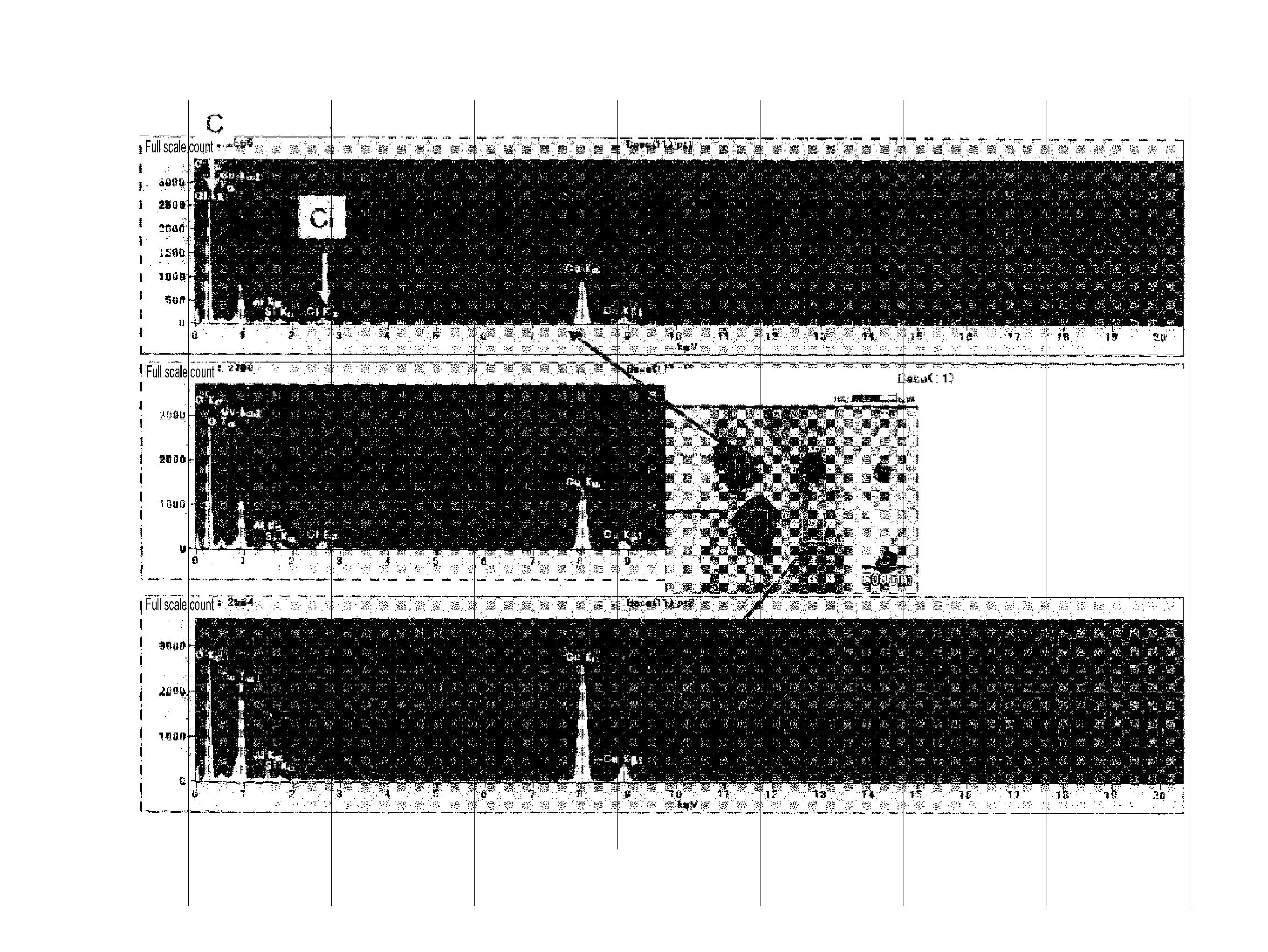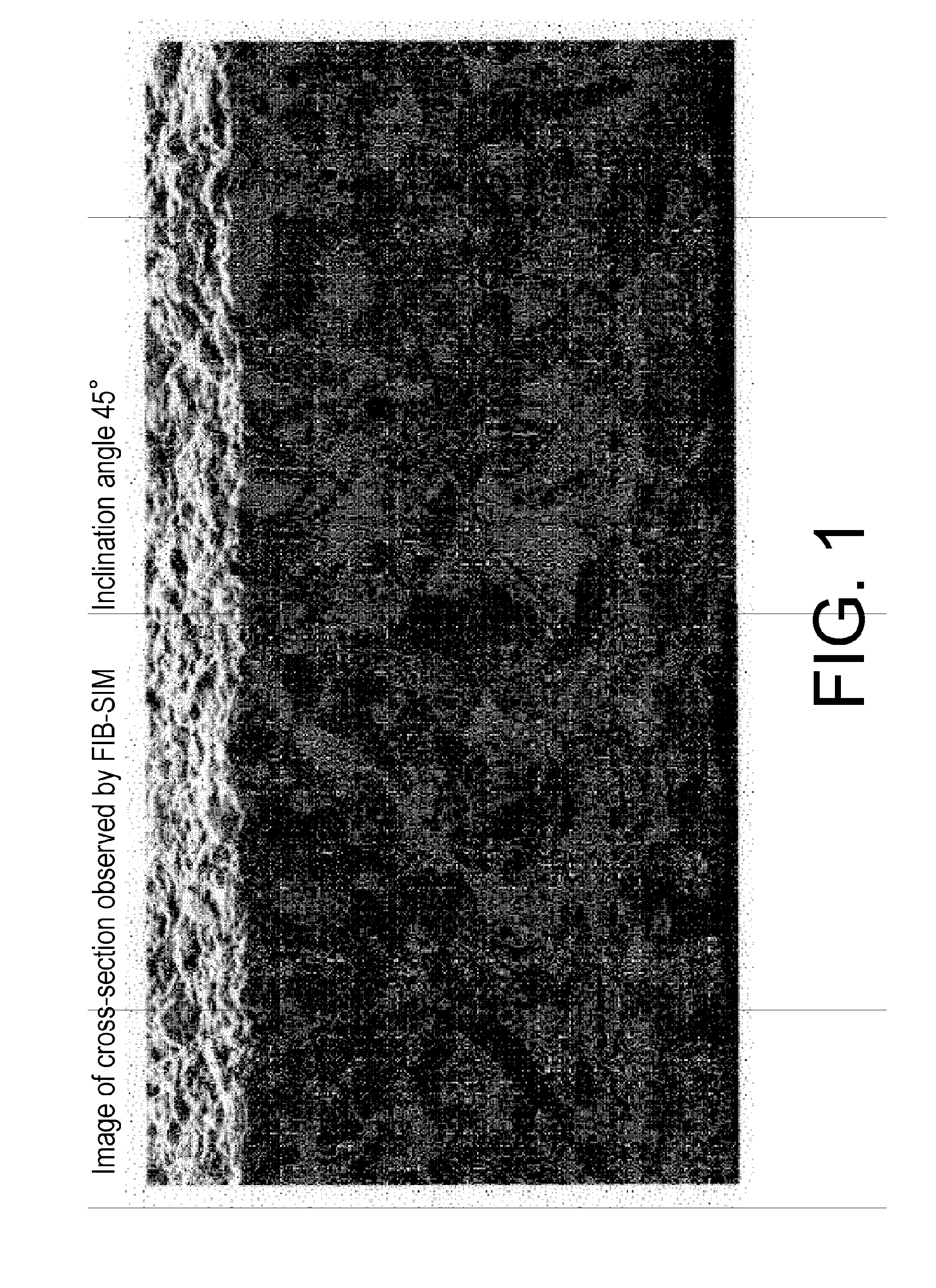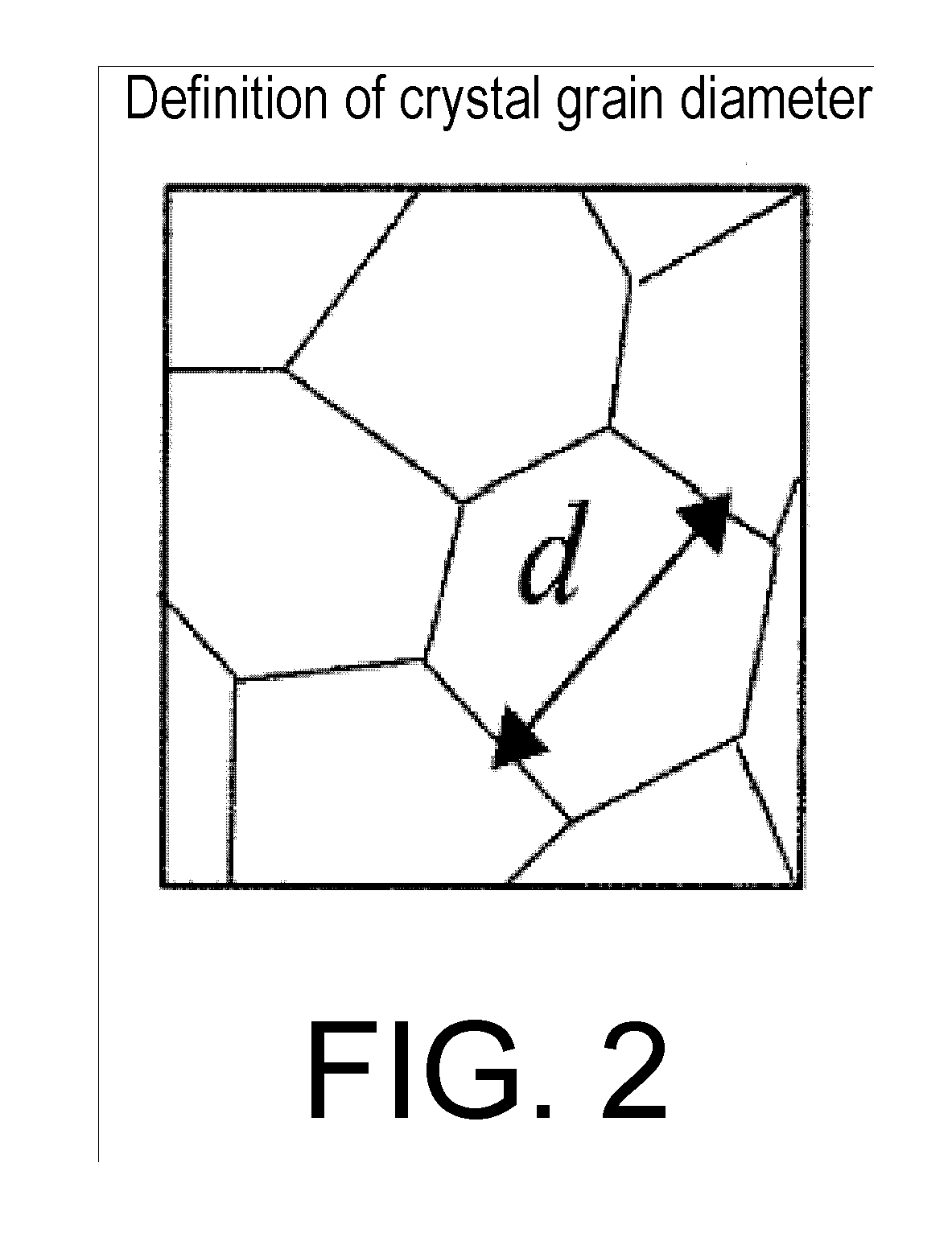Lithium-ion secondary battery, electrode for the secondary battery, and electrolytic copper foil for electrode for the secondary battery
- Summary
- Abstract
- Description
- Claims
- Application Information
AI Technical Summary
Benefits of technology
Problems solved by technology
Method used
Image
Examples
second embodiment
[0202]Based on the results of the analyses described below and diligent research into the relationship between the chlorine, carbon, oxygen, sulfur, and nitrogen content included in a copper foil and the mechanical strength, the copper foil according to the second embodiment of the present invention is a copper foil that includes chlorine, carbon C, and oxygen at concentrations of 1017 to 5×1020 atoms / cm3 each, sulfur S and nitrogen N at concentrations of 1015 to 1019 atoms / cm3 each, and under normal conditions the copper foil has a tensile strength of 580 N / mm2 or more and a 0.2% proof stress of 250 N / mm2 or more, so it is the copper foil with excellent mechanical strength.
[0203]It was not possible to satisfy the above mechanical strength when the electrolytic copper foil was outside the atomic content described above. The superiority and inferiority of the mechanical strength is described later with reference to the Second Working Example set and the Second Comparative Example set...
second working example set
[0215]The Second Working Example set is the same as the First Working Example set as described above, but the following examples and comparative examples were produced in accordance with the conditions shown in the following table.
working examples 1a to 10a
, Comparative Examples 1a to 4a
Manufacture of Copper Foil
[0216]Each of the additive compositions shown in Table 4 were added to an acidic copper electrolytic bath of copper from 70 to 130 g / L and sulfuric acid from 80 to 140 g / L.
[0217]In table 4, ethylene thiourea as the thiourea, hydroxyethyl cellulose as the polymer polysaccharide, and chloride ion were added in the concentrations shown in Table 4 to prepare an electrolytic solution for producing the foil.
[0218]The chloride ion concentration was adjusted to 30 ppm, but the chloride ion concentration was changed as appropriate in accordance with the electrolysis conditions, so there was no limit to this concentration.
[0219]Using the prepared electrolytic solution, and using a titanium electrode covered with a noble metal oxide as the anode, and a titanium rotating drum as the cathode, unprocessed copper foils with a thickness of 18 μm were produced under the electrolysis conditions shown in Table 4 (current density, liquid temperat...
PUM
| Property | Measurement | Unit |
|---|---|---|
| Temperature | aaaaa | aaaaa |
| Length | aaaaa | aaaaa |
| Fraction | aaaaa | aaaaa |
Abstract
Description
Claims
Application Information
 Login to View More
Login to View More - R&D
- Intellectual Property
- Life Sciences
- Materials
- Tech Scout
- Unparalleled Data Quality
- Higher Quality Content
- 60% Fewer Hallucinations
Browse by: Latest US Patents, China's latest patents, Technical Efficacy Thesaurus, Application Domain, Technology Topic, Popular Technical Reports.
© 2025 PatSnap. All rights reserved.Legal|Privacy policy|Modern Slavery Act Transparency Statement|Sitemap|About US| Contact US: help@patsnap.com



